Are you looking for an easy and budget-friendly way to give your lawn some extra life? Have you considered overseeding centipede grass? Overseeding can help restore and enhance the look of any area, from a large backyard to small city balcony. It also helps control weeds and extend the lifespan of your grass. In this blog post, we will provide you with the essential steps to overseed your centipede grass and maintain its lushness. You’ll also find expert tips that are sure to help you achieve the landscaping of your dreams! Let us guide you through everything there is to know about taking care of centipede grass.
Table of Contents
Should You Overseed Centipede Grass?
Centipede grass is a popular lawn choice due to its low maintenance requirements and relatively thick, lush foliage. However, overseeding Centipede grass can be beneficial for improving the health of your lawn and helping it withstand harsh conditions.
Overseeding involves spreading grass seed over an existing lawn in order to fill in bare spots or create thicker coverage overall. This method helps to improve the quality of your yard by introducing new grass varieties that are better adapted to local climate conditions.
Best Grass To Overseed Centipede Lawns With
Bermuda Grass
To overseed centipede lawns, Bermuda grass is an ideal warm-season turfgrass that can be used. This hardy grass is highly aggressive and will spread rapidly, providing a lush lawn free of bare spots. Bermuda grass is also drought tolerant and can handle heavy wear and tear from foot traffic or pets.

Perennial Ryegrass
For overseeding centipede lawns, perennial ryegrass is a prime selection. This hardy cool-season grass grows rapidly, and is capable of in both shaded and full sun areas. Establishing a lush, green lawn is easily achievable with perennial ryegrass. It spreads quickly and creates a beautiful carpet of greenery in your outdoor space that will last for many years to come. [1]
Annual Ryegrass
Annual ryegrass is a third great option for overseeding centipede lawns. This cool-season grass grows quickly, providing your lawn with quick coverage. It can tolerate both shade and full sun and is resistant to drought and foot traffic. Planting annual ryegrass is an easy process, and it can quickly spread to fill any barren patches in your lawn with a plush, thick layer of grass.
Tall Fescue
Tall fescue is a warm-season turfgrass that can be used to overseed centipede lawns. It has good tolerance to drought and heavy wear and tear but does not tolerate shade as well as some of the other options on this list. Tall fescue germinates quickly and will spread rapidly when given enough sunlight, helping you get a lush, green lawn in no time.
No matter which grass you choose to overseed your centipede lawn with, the key is to make sure you follow proper seeding techniques for best results. Be sure to prepare the soil before planting and water regularly until the new grass is established. With the right care and maintenance, any of these grasses can help create a beautiful centipede lawn that lasts for years. [2]
How To Overseed Centipede Grass
1. Clear The Lawn Of Debris
Before you begin overseeding, it’s important to clear your lawn of any debris that could prevent the seed from making direct contact with the soil.
2. Mow Your Grass
Once your lawn is cleared and ready for overseeding, mow it with a reel-style mower. This will help to create the optimum conditions for the grass seed by creating loose soil and small openings in the grass blades.
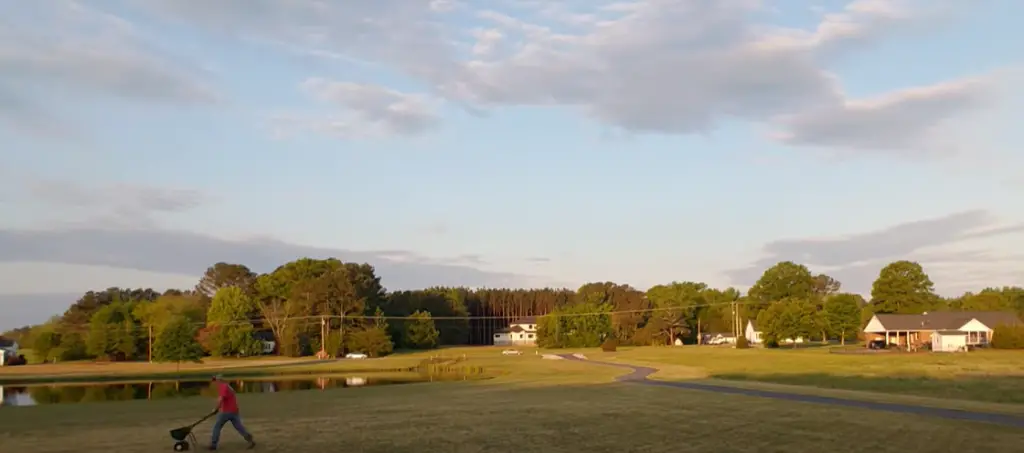
3. Aerate/Dethatch Your Lawn
Aerating and dethatching your lawn will help to improve soil drainage, introduce air into the soil, and create a smoother surface for the seed. You can rent or purchase an aerator from most gardening centers.
4. Select Quality Seeds Plus A Spreader
When purchasing grass seed, make sure to select a quality variety that’s suitable for your region and climate. You may also want to purchase a spreader to help evenly distribute the seeds on your lawn.
5. Seed Your Centipede Grass
Once you have everything in place, it’s time to overseed your centipede grass. Start by spreading the seed at a rate of one pound per 1,000 square feet. Once the seeds are dispersed, lightly rake them into the soil with a broom or an old kitchen fork.
6. Apply Fertilizer To Your Centipede Grass
Once your centipede grass has been seeded, it’s important to apply a bit of fertilizer. This will help the seeds germinate and grow faster. You can purchase a slow-release fertilizer or opt for a granular type that will provide your lawn with vital nutrients during the growing season.
7. Water Your Lawn Regularly
After overseeding is complete, make sure to water your lawn regularly for at least two weeks until the grass is established. This will help ensure that your new centipede grass grows healthy and strong. Try to water at least twice daily, focusing on areas where there are heavy patches of seedlings. [3]
When To Overseed?
Overseeding centipede grass can be done anytime, but the best time to do it is in late summer or early fall. This ensures that your lawn will have plenty of time to establish itself before cold temperatures arrive. If you are looking for a quick fix, you can overseed in spring as well – just make sure to keep the soil moist and mow regularly.
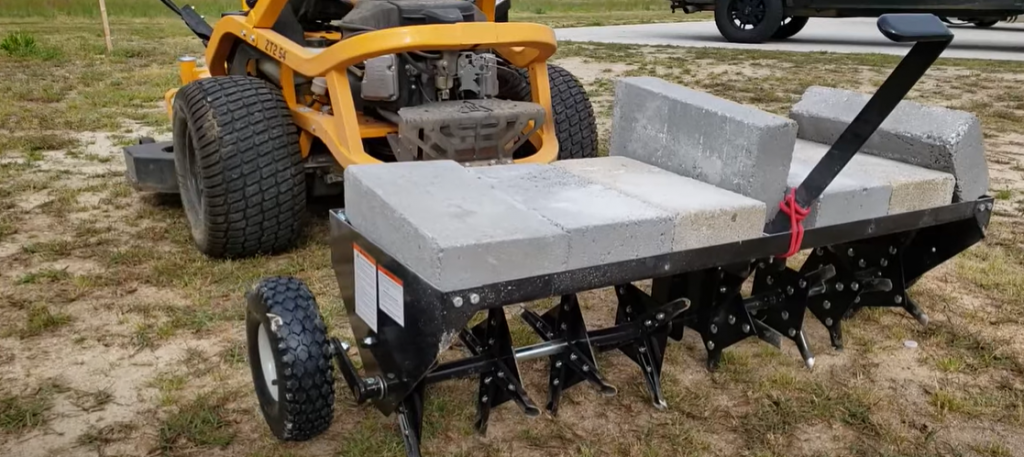
Maintain Centipede Grass After Overseeding
After overseeding your centipede grass, it is important to maintain the turf to ensure its optimal health. Fertilize the lawn two weeks after overseeding with a slow-release fertilizer that contains no more than 4% nitrogen. Apply 1/4 pound of nitrogen per 1000 square feet every 8 to 10 weeks during the growing season (April through October). Avoid fertilizing in late summer and early fall as too much nitrogen can cause excessive growth going into winter.
Water newly seeded grasses if there’s not enough rain. During germination, keep shallow-rooted seedlings moist but not soggy by watering lightly every day or two until deep roots establish. Once new grass establishes itself, reduce the watering schedule gradually over a few weeks to encourage deep root growth.
Finally, reduce compaction in your turf by aerating it once or twice per year — especially in heavily used areas of the lawn — using a tow-behind or hand aerator. Aeration removes small plugs of thatch, allowing air, nutrients and water to penetrate the soil and stimulate root growth. This is essential for keeping your centipede grass healthy.
It requires a bit of work to get centipede grass established, but overseeding will help you achieve lush green turf without having to completely re-sod your lawn. With proper maintenance and care, you can ensure that your newly seeded centipede grass will thrive for years to come! [4]
Centipede Grass Problems
Overseeding is a great way to quickly bring your centipede grass back from dormancy and solve many common problems. Centipede grass can suffer from various diseases, weeds, and lack of fertility that can be remedied with regular overseeding. Diseases such as brown patch, dollar spot, gray leaf spot, and rust should all be treated with fungicides prior to overseeding for best results.
Additionally, if you have been noticing an abundance of weeds growing in your lawn such as crabgrass or dallisgrass then overseeding will help suppress the weed growth.
Finally, depending on soil tests and recommendations from professionals you may need to add additional nutrients to your centipede grass in order to keep it healthy.
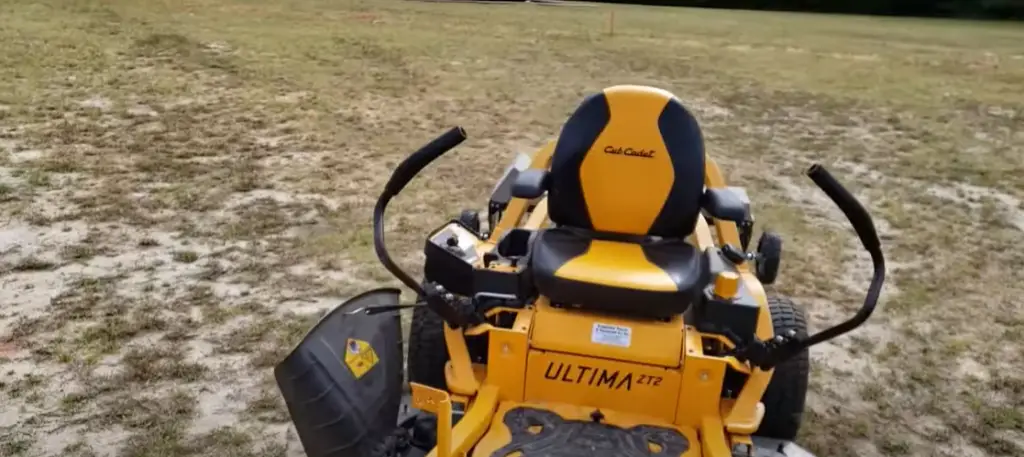
What Is the Best Centipede Grass Fertilizer?
Centipede grass is a low-maintenance, warm-season turfgrass that requires little nitrogen and other fertilizers for optimal health. The best fertilizer to use when overseeding centipede grass should provide adequate amounts of phosphorus and potassium, but only small amounts of nitrogen.
A slow-release organic fertilizer such as Milorganite or lawn food from a reputable manufacturer is ideal for this purpose. It’s important to apply the fertilizer at least six weeks prior to overseeding so that it has time to break down into its individual components before any germination occurs.
Additionally, be sure to take away any clumps of existing grass before applying the new seed. This will help ensure even coverage and proper seed-to-soil contact which will improve the chances of successful germination. If you are looking for a quick and easy option, consider using a drop spreader to distribute your new seed evenly across the lawn.
When overseeding centipede grass, it’s essential to water regularly and deeply over the next few weeks in order to keep the soil moist for optimal germination rates. Try watering between an inch and 1½ inches per week; more during extremely hot summer months or periods of drought. With proper care, your centipede grass should be fully restored within six weeks.
By following these steps, you can ensure that your centipede grass is healthy and lush once again. With regular fertilization and overseeding, you can have a beautiful and low-maintenance lawn for years to come. [5]
FAQ
What is the best seed to overseed centipede grass?
The best type of seed to overseed centipede grass is a combination of fine fescues and perennial ryegrass. This mixture will help promote the faster germination of the desired species in your lawn while also providing a thick, healthy turf.
How often should I overseed my centipede grass?
You should aim to overseed your centipede grass at least once per year, preferably in early fall when temperatures are cooler. This will give the new seed enough time to become established before winter weather sets in.
What kind of preparation do I need to do before overseeding my centipede grass?
Before you can begin overseeding, you must prepare your terrain: mow your lawn at a height of two inches; rake the area to remove any debris, thatch or clippings; and aerate the soil. You may also want to apply a fertilizer to help the new seed get established.
How much seed should I use when overseeding centipede grass?
Generally speaking, you should apply about 1-2 pounds of seed for every thousand square feet of turf. Be sure to evenly spread out the seed so that it’s not concentrated in one area. Also consider applying a starter fertilizer along with the seed for optimal results.
What is the best time of year to overseed my centipede grass?
The best time of year to overseed centipede grass is in the early fall when temperatures are cooler and there is more moisture in the air. This will give the new seed enough time to become established before winter weather sets in.
How long does it take for centipede grass to germinate after overseeding?
It typically takes about 10-14 days for centipede grass to germinate after overseeding. During this time, keep the soil moist and provide occasional light watering. Once the grass has germinated, increase your watering frequency but avoid over-watering or saturating the soil.
What kind of maintenance do I need to do after overseeding my centipede grass?
Once your centipede grass has been overseeded, it’s important to provide the newly established seedlings with proper care and maintenance. This includes regular mowing, light fertilization and occasional watering. Be sure to also keep an eye out for pests or diseases that could harm your grass.
Can I overseed centipede grass in the summer?
It is not recommended to overseed centipede grass in the summer as this can cause more stress on the turf by making it difficult for new seedlings to become established due to higher temperatures and drier conditions. It’s best to wait until fall when temperatures are cooler and there is more moisture in the air.
How do you thicken centipede grass?
Thickening centipede grass can be done by overseeding it. Overseeding is the process of lightly distributing grass seed over an existing lawn to improve density, color and texture. To overseed your centipede grass, the first step is to prepare your soil for the new seed. Start by mowing your lawn as low as possible without scalping it (scalping means cutting too low and exposing crowns or runners). Then rake up any debris and dead grass clippings from the area you are overseeding. Next, loosen the topsoil with a light hoeing or raking so that the new seed has good contact with the soil.
Once this is done, you can begin spreading your centipede grass seed. Use a drop spreader or broadcast spreader and apply the seed evenly over your existing lawn in two directions, one horizontally and one vertically. After seeding, cover the area lightly with a thin layer of sand to help hold moisture against the soil and keep birds from eating the seeds. Finally, water your newly seeded centipede grass for at least 30 minutes each day until it is established.
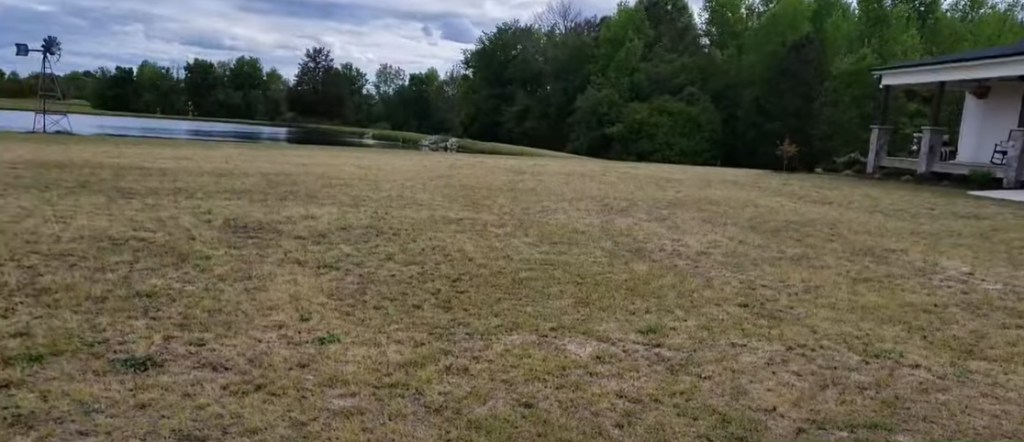
When should you aerate centipede grass?
Centipede grass should be aerated in the spring and fall. This helps reduce soil compaction, improve air exchange and drainage, increase nutrient availability, and promote healthy root growth. To aerate your centipede lawn, use a core aerator or plugging machine to remove plugs of soil from the turf. The holes created by the plugs allow water, fertilizer and oxygen to penetrate deeper into the soil profile, promoting healthy turfgrass. Additionally, overseeding can help thicken your centipede lawn.
Can I overseed my centipede with Bermuda?
No, you should not overseed your centipede with Bermuda as these two grasses have different growing requirements. Centipede grass is best suited for low-maintenance lawns and requires little fertilization to thrive. On the other hand, Bermuda grass does better with higher amounts of fertilizer and water. This could lead to overfertilizing or overwatering your centipede lawn which may result in disease, weed infestation and poor growth. Instead of overseeding with Bermuda, consider using a turf type tall fescue that can tolerate similar conditions as centipede while providing a thicker darker green turfgrass.
Will centipede grass take over?
Centipede grass will not take over other turfgrass species if it is properly maintained. However, centipede grass can be very aggressive when fertilized and watered correctly. To prevent your centipede lawn from spreading, use a pre-emergent herbicide in the spring to keep weed and grass seeds from germinating. Additionally, mow regularly and remove clippings to reduce nutrient availability for the centipedegrass. Finally, make sure to water deeply but infrequently to encourage deep rooting and discourage shallow rooting of the turfgrass.
Useful Video: How To Aerate and Overseed Your Lawn / Centipede Grass
Conclusion
When overseeding centipede grass, it is important to select the right seed and soil amendments. The best time of year to overseed is late summer and early fall when temperatures are cooler and rainfall is more frequent. Be sure to water regularly for several weeks after planting and mow at a slightly higher height than normal. If you have followed all these steps, your lawn should look lush and green in no time! Good luck!
References:
- https://homeguides.sfgate.com/overseed-centipede-grass-50747.html
- https://www.lawnandpetal.com/how-to-overseed-a-centipede-grass-lawn-in-9-easy-steps/
- https://www.pennington.com/all-products/grass-seed/resources/all-you-need-to-know-about-centipede-grass
- https://www.backyardgardener.com/garden-forum-education/lawn-care/how-to-aerate-and-overseed-your-centipede-grass/
- https://housemethod.com/lawn/how-to-make-centipede-grass-thicker/

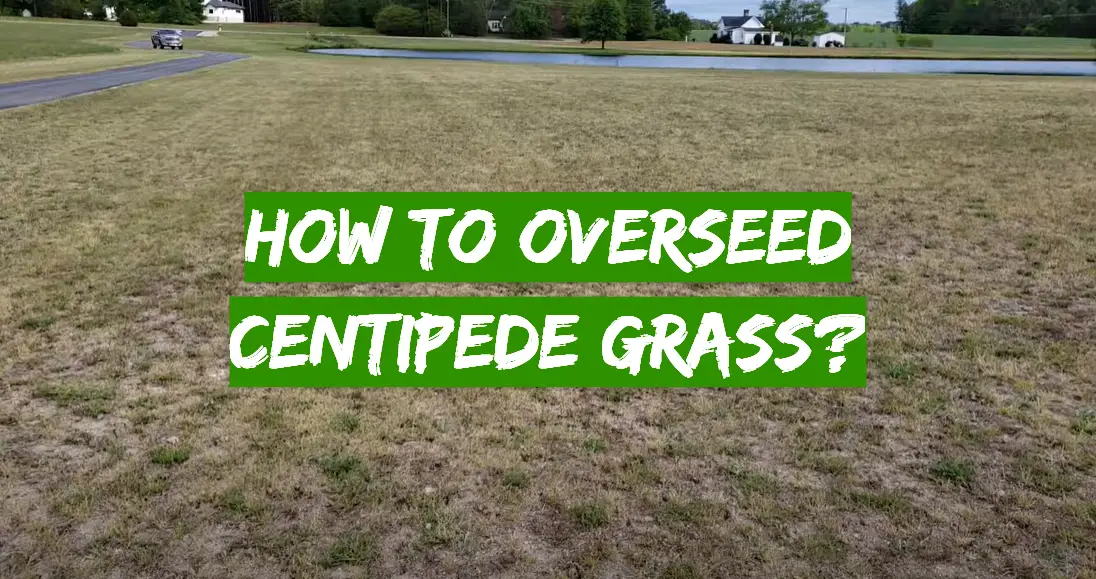





Leave a Reply
View Comments